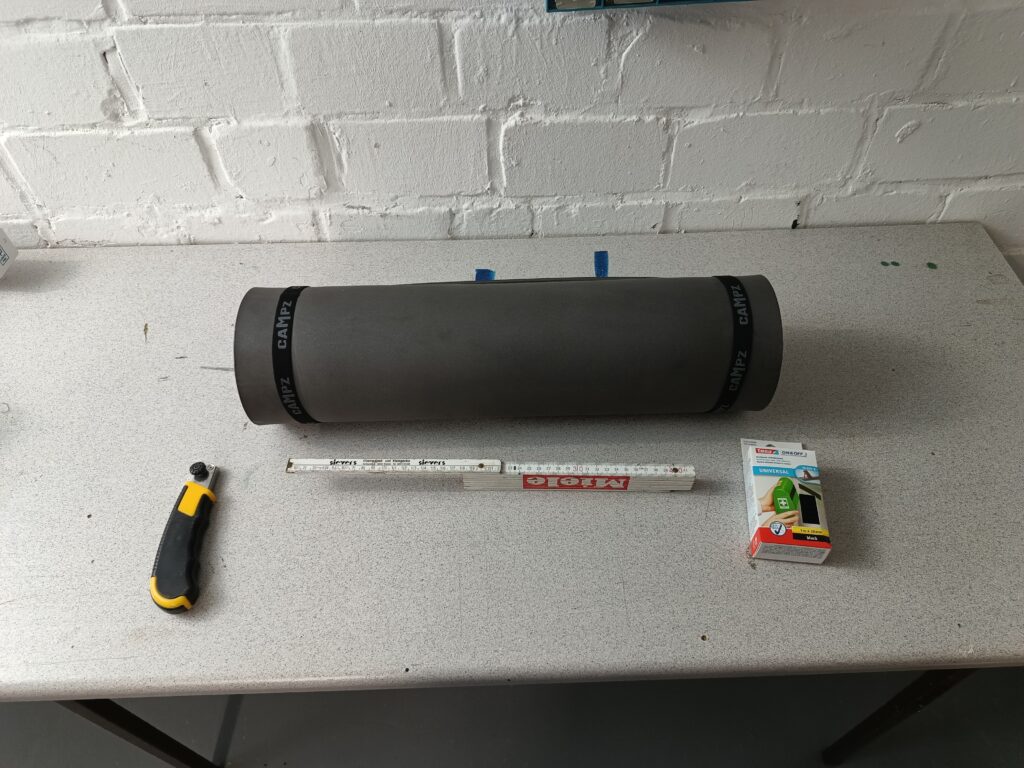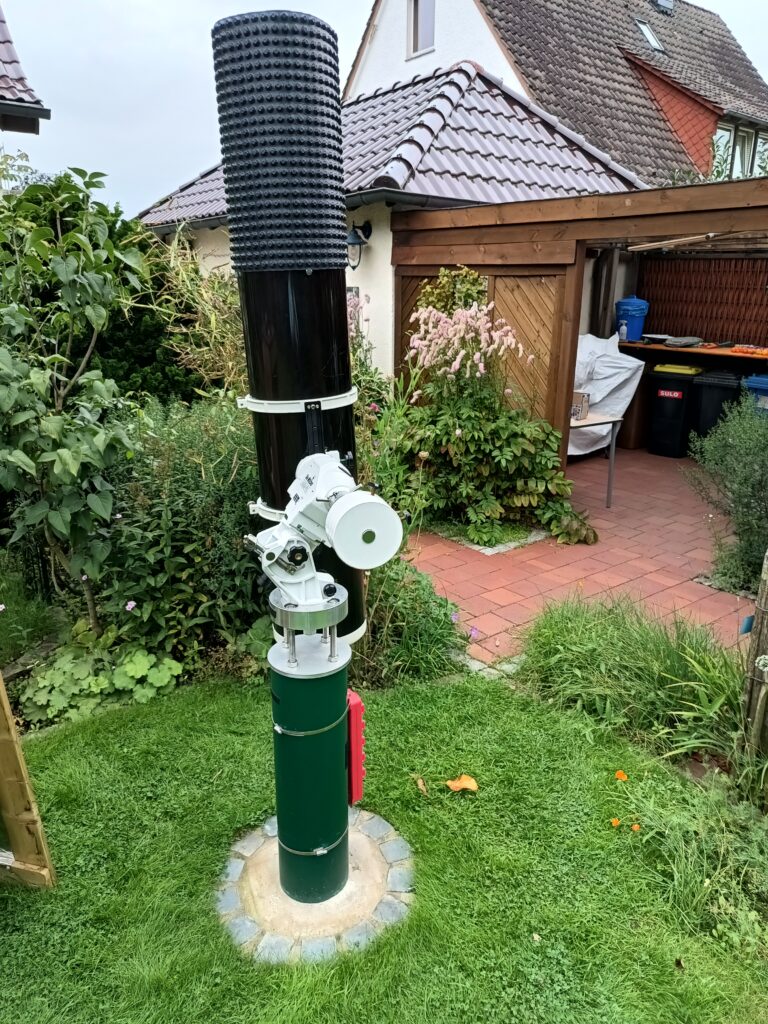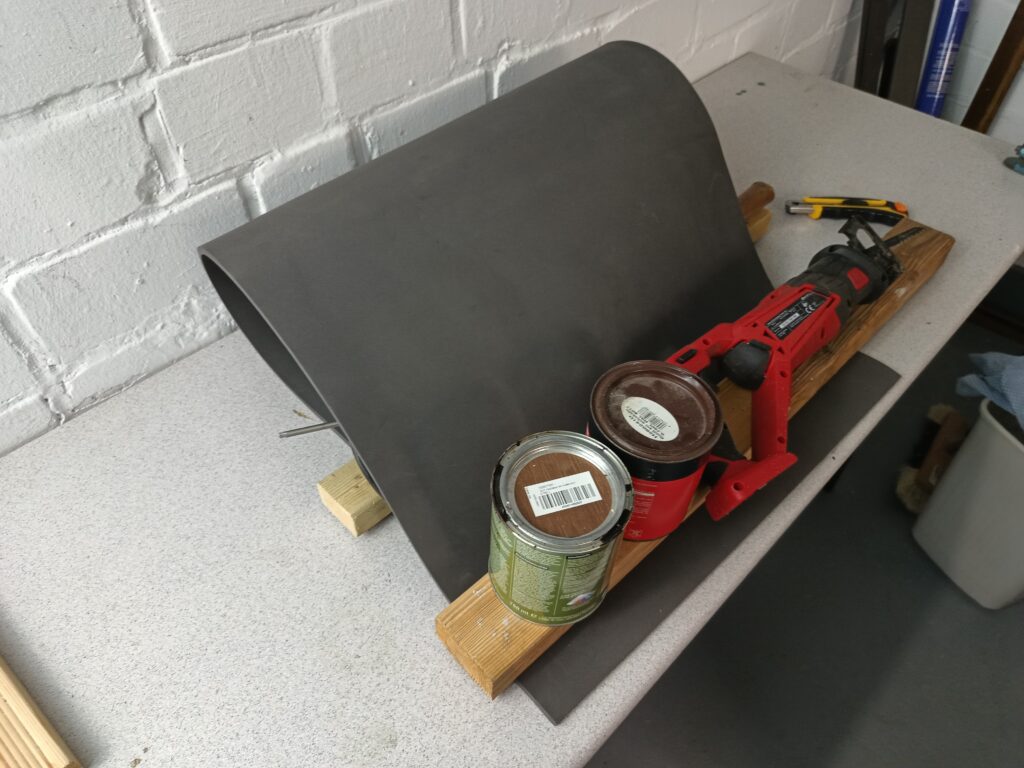Dr. Gerold Holtkamp, 2023.09.08
What is the difference between a master and dew? No master has yet fallen from heaven ... but dew (a German saying). I had to realize this painfully at the last Westhavelland AstroTreff (see report on this homepage). The proximity to the Havel river of the event and observation location there creates a lot of moisture in the air, so that even in August the dew can be a problem for the nighttime observer.
Dew usually falls quite vertically from above. My Newton telescope with 250 mm aperture is - like all telescopes of this type - open at the top. If the observation object is high in the sky, there is nothing in the way for the dew to penetrate the telescope. The primary mirror – far back in the tube – is not affected as much as the secondary mirror – far forward. It doesn't help that the mirror is pointed downwards.
So a solution was needed so that another promising observation night would not have to be canceled after an hour or something similar. A dew cap can help a lot here because it blocks most of the path for the dew. Of course, it is less useful for observations close to the zenith. In the long term, a secondary mirror heating must also be installed. Symbol „Von der Community überprüft“ In Google Übersetzer öffnen • Feedback geben Google Übersetzer
Below I show the illustrated history of my new dew cap. Motto: Achieve a big impact with simple means.

The material used is a sleeping mat, which you can get from a trekking store or online for little money. I paid less than 10 euros including shipping. It is 0.8 cm thick EVA foam, 200 cm long and 55 cm wide. According to the seller, the mat should have a black color, it is more of a dark gray, but matt (as the name suggests... 😉). You will also need self-adhesive Velcro tape, which you can get at any hardware store. The only tools you need are a sharp knife, a folding rule and a ruler for a straight cutting edge.

Before I could start the actual construction, I had to test whether the width (see above) of the iso-mat (that is the later height of the dew cap) would limit the field of view of the telescope. I still had leftover bubble wrap that was ideal for this purpose.

The test result was positive: I was able to use the full width of the insulation mat.

The sleeping pad was cut to the length of the circumference of the telescope tube plus approx. 5 cm. On one side, the soft Velcro tape was glued exactly to the cut edge. The exact position for the rough Velcro strip was then determined on the tube.

Both Velcro straps were pressed onto the foam for about 10 hours with something heavy (whatever was there...). After that, the connection should hold up well.

The remaining remaining part of the insulation mat could then be cut off.

Here the dew cap is waiting for its first use. You can still see a holding rubber at the bottom of the dew cap that is made from the two ring rubbers with which the mat was delivered. The first observations of objects in the very high Hercules on one night - with dew - were successful, i.e. no fogging in the telescope - not even after several hours!